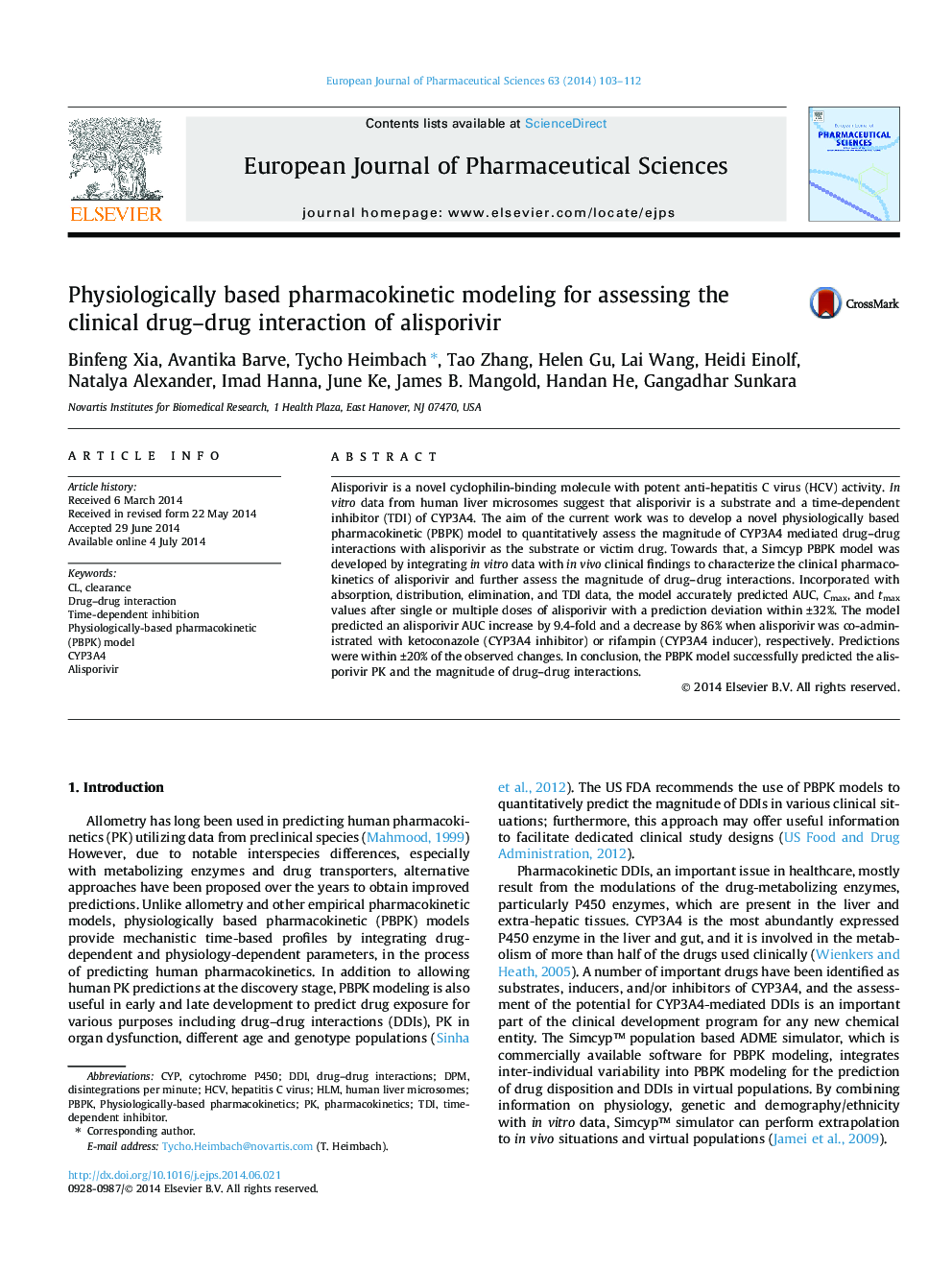| کد مقاله | کد نشریه | سال انتشار | مقاله انگلیسی | نسخه تمام متن |
|---|---|---|---|---|
| 2480489 | 1556187 | 2014 | 10 صفحه PDF | دانلود رایگان |
Alisporivir is a novel cyclophilin-binding molecule with potent anti-hepatitis C virus (HCV) activity. In vitro data from human liver microsomes suggest that alisporivir is a substrate and a time-dependent inhibitor (TDI) of CYP3A4. The aim of the current work was to develop a novel physiologically based pharmacokinetic (PBPK) model to quantitatively assess the magnitude of CYP3A4 mediated drug–drug interactions with alisporivir as the substrate or victim drug. Towards that, a Simcyp PBPK model was developed by integrating in vitro data with in vivo clinical findings to characterize the clinical pharmacokinetics of alisporivir and further assess the magnitude of drug–drug interactions. Incorporated with absorption, distribution, elimination, and TDI data, the model accurately predicted AUC, Cmax, and tmax values after single or multiple doses of alisporivir with a prediction deviation within ±32%. The model predicted an alisporivir AUC increase by 9.4-fold and a decrease by 86% when alisporivir was co-administrated with ketoconazole (CYP3A4 inhibitor) or rifampin (CYP3A4 inducer), respectively. Predictions were within ±20% of the observed changes. In conclusion, the PBPK model successfully predicted the alisporivir PK and the magnitude of drug–drug interactions.
Figure optionsDownload high-quality image (49 K)Download as PowerPoint slide
Journal: European Journal of Pharmaceutical Sciences - Volume 63, 15 October 2014, Pages 103–112
